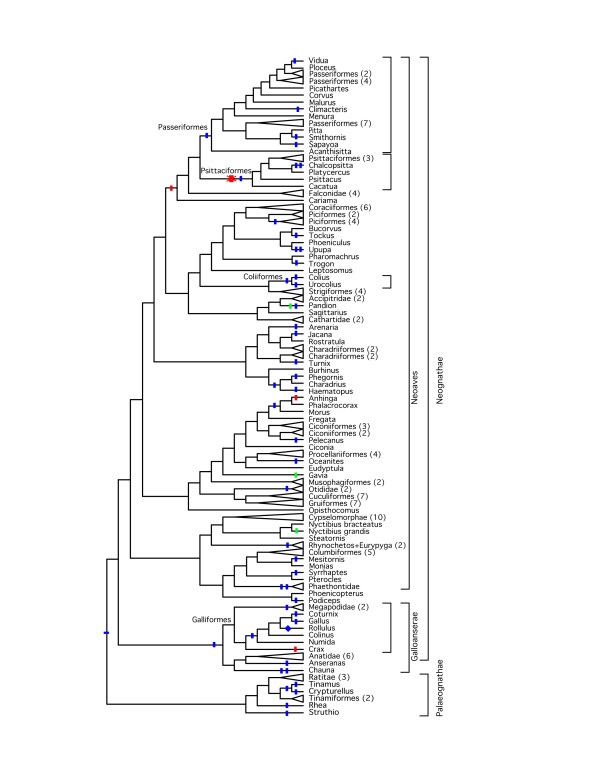Figure 3.
Microinversions indicated on the Hackett et al. [27]phylogeny. Inversions in introns are indicated with tick marks (blue for no homoplasy, green for the homoplastic inversions in CLTC intron 6, and red for the homoplastic inversions in CLTC intron 7). The 3' UTR inversion the PCBD1, which was obtained from selected galliform (see Results and Discussion), is indicated with a blue diamond. This mapping of character state changes assumes a reversal to the ancestral state in Psittaciformes for the CLTC intron 7 microinversion (indicated by an X over the red tick mark). An inversion in CLTCL1 where Palaeognathae and Neognathae differ is shown along the root branch. Orders united by microinversions are indicated using names above the branch uniting them and brackets to the right. The order Galliformes is emphasized because 3' UTRs were sequenced from additional taxa in that order (see text). This phylogeny is presented as a cladogram because many internal branches are very short and this presentation makes it easier to locate the inversion events. For branch length information refer to Figure 3 in Hackett et al. [27] and the chronogram presented for this publication (Additional file 2, Figure S3).

